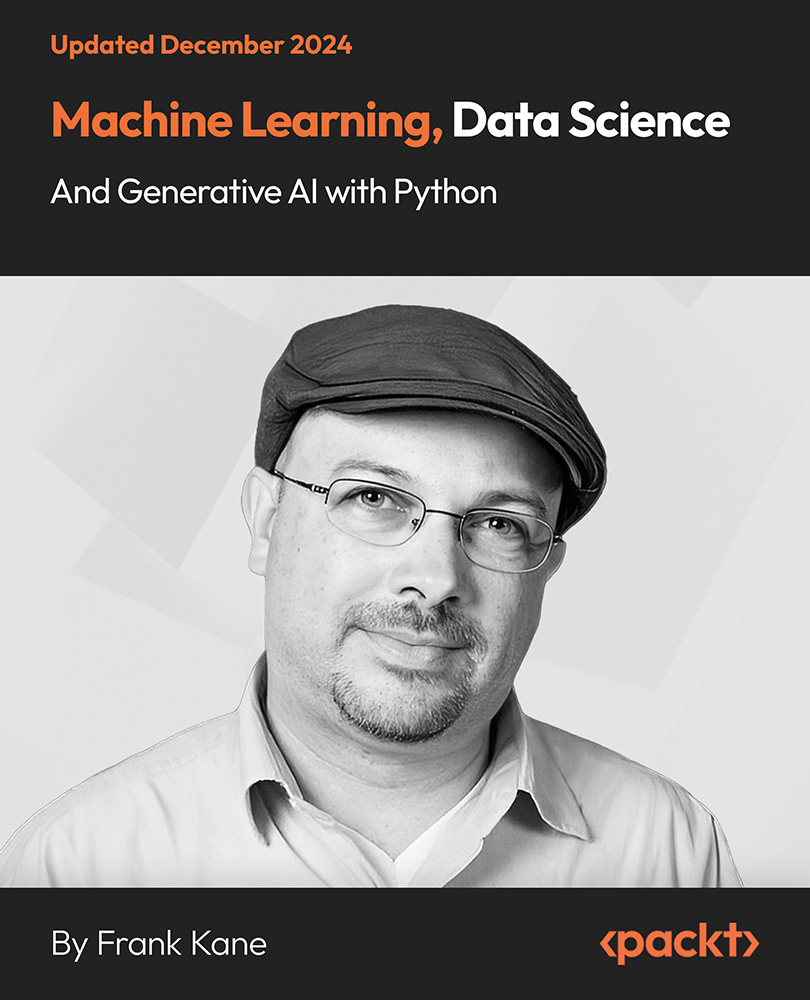-
Book Overview & Buying

-
Table Of Contents
-
Feedback & Rating

Machine Learning, Data Science and Generative AI with Python
By :

Machine Learning, Data Science and Generative AI with Python
By:
Overview of this book
This course begins with a Python crash course and then guides you on setting up Microsoft Windows-based PCs, Linux desktops, and Macs. After the setup, we delve into machine learning, AI, and data mining techniques, which include deep learning and neural networks with TensorFlow and Keras; generative models with variational autoencoders and generative adversarial networks; data visualization in Python with Matplotlib and Seaborn; transfer learning, sentiment analysis, image recognition, and classification; regression analysis, K-Means Clustering, Principal Component Analysis, training/testing and cross-validation, Bayesian methods, decision trees, and random forests.
Additionally, we will cover multiple regression, multilevel models, support vector machines, reinforcement learning, collaborative filtering, K-Nearest Neighbors, the bias/variance tradeoff, ensemble learning, term frequency/inverse document frequency, experimental design, and A/B testing, feature engineering, hyperparameter tuning, and much more! There's a dedicated section on machine learning with Apache Spark to scale up these techniques to "big data" analyzed on a computing cluster.
The course will cover the Transformer architecture, delve into the role of self-attention in AI, explore GPT applications, and practice fine-tuning Transformers for tasks such as movie review analysis. Furthermore, we will look at integrating the OpenAI API for ChatGPT, creating with DALL-E, understanding embeddings, and leveraging audio-to-text to enhance AI with real-world data and moderation.
Table of Contents (16 chapters)
Getting Started
Statistics and Probability Refresher, and Python Practice
Predictive Models
Machine Learning with Python
Recommender Systems
More Data Mining and Machine Learning Techniques
Dealing with Real-World Data
Apache Spark: Machine Learning on Big Data
Experimental Design / ML in the Real World
Deep Learning and Neural Networks
Generative Models
Generative AI: GPT, ChatGPT, Transformers, Self-Attention Based Neural Networks
The OpenAI API (Developing with GPT and ChatGPT)
Retrieval Augmented Generation (RAG), Advanced RAG, and LLM Agents
You Made It!
Customer Reviews

